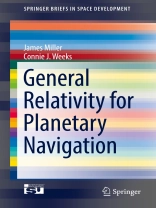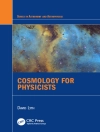This brief approaches General Relativity from a planetary navigation perspective, delving into the unconventional mathematical methods required to produce computer software for space missions. It provides a derivation of the Einstein field equations and describes experiments performed on the Near Earth Asteroid Rendezvous mission, spanning General Relativity Theory from the fundamental assumptions to experimental verification.
The software used for planetary missions is derived from mathematics that use matrix notation. An alternative is to use Einstein summation notation, which enables the mathematics to be presented in a compact form but makes the geometry difficult to understand. In this book, the relationship of matrix notation to summation notation is shown. The purpose is to enable the reader to derive the mathematics used in the software in either matrix notation or summation notation. This brief is a useful tool for advanced students andyoung professionals embarking on careers in planetary navigation.
Spis treści
Chapter 1: Einstein Field Equations.- Chapter 2: Schwarzschild Solution for Metric Tensor.- Chapter 3: Comparison of Numerical Integration and Analytic Solutions.- Chapter 4: General Relativity Time Delay Experiment Experimental Results.
O autorze
James Miller worked as the assistant Navigation Team Chief on the Viking Mission to Mars in 1976. In 2000, he received the Mechanics and Control of Flight medal from the AIAA for his design of the navigation system for the first orbiting and landing on the asteroid Eros. Further, he designed a trajectory to leave Earth and orbit the Moon with no propulsive maneuvers. This was the first practical solution of the four-body problem, and it has since been used on the missions Hiten, Genesis, and Grail.












